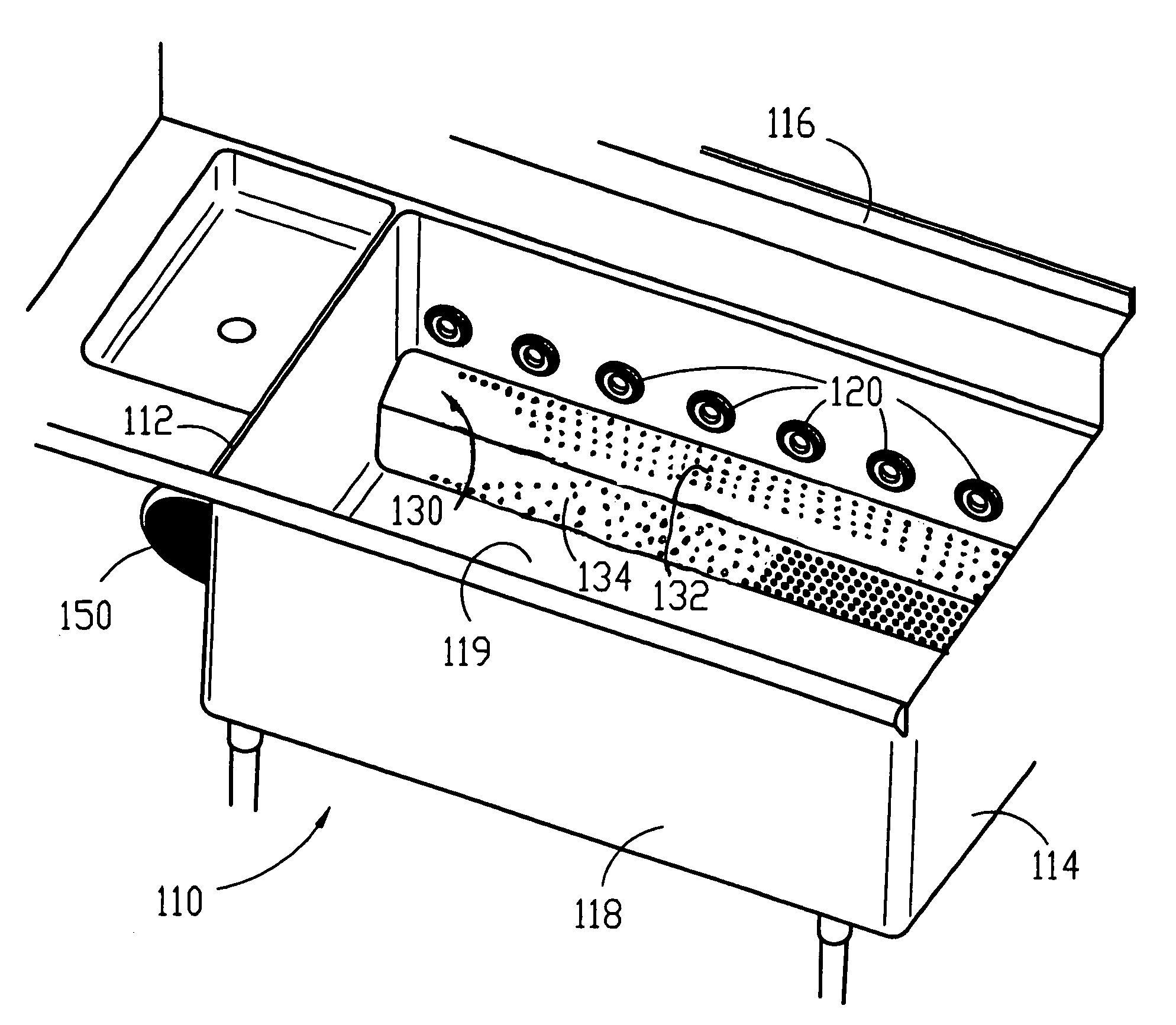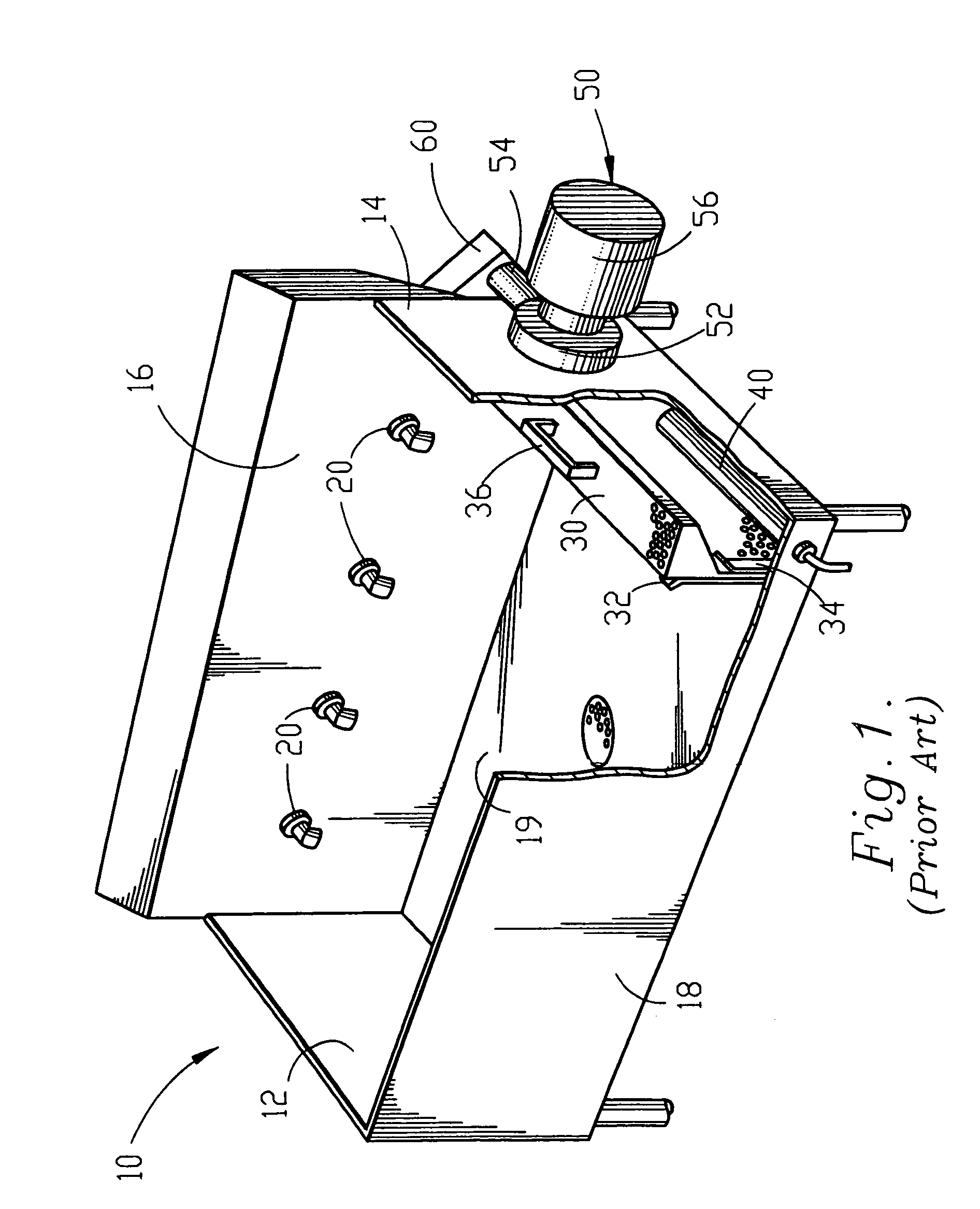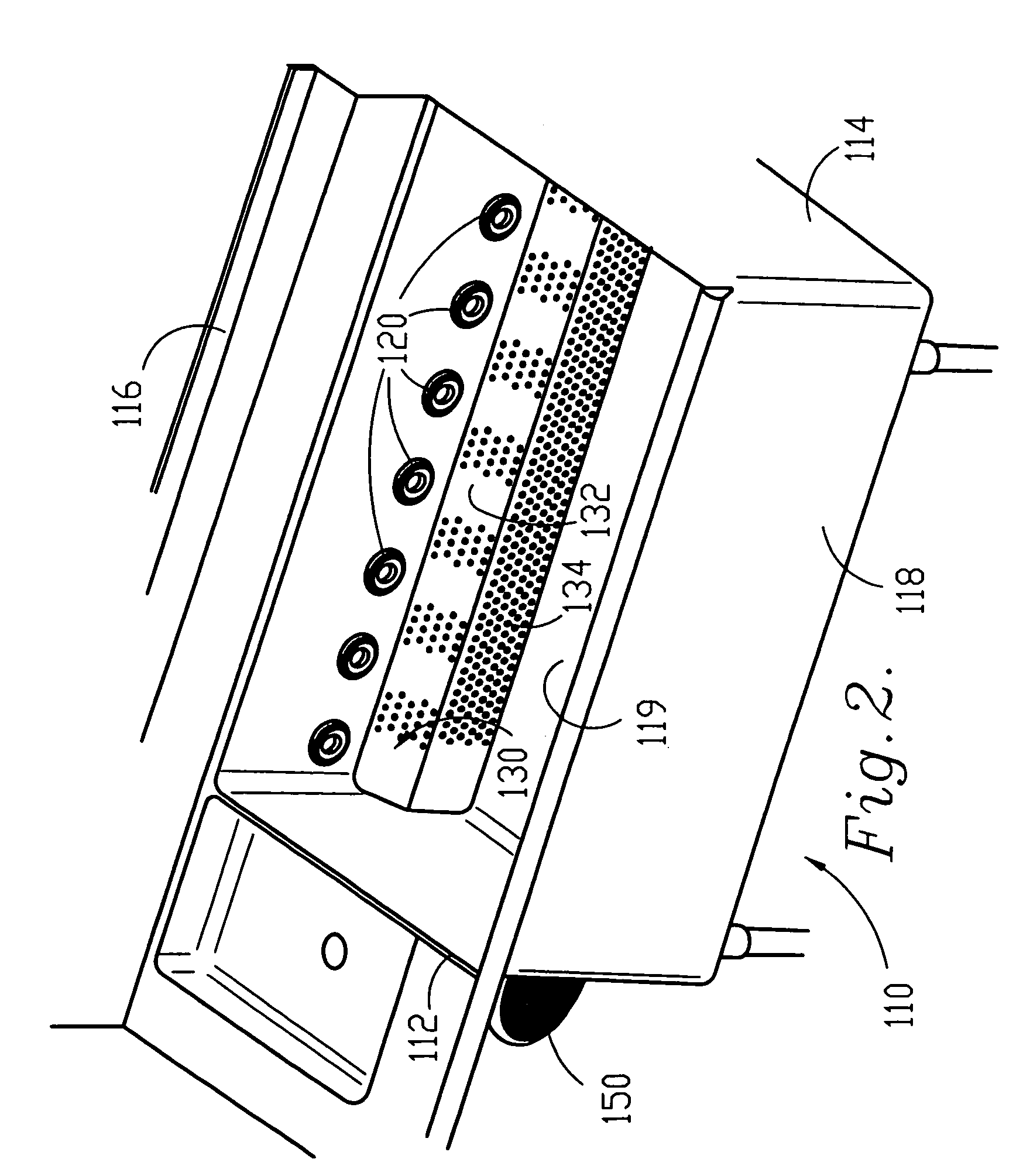Pot and pan washing machine, components, and methods of washing items
a technology of washing machine and components, applied in the direction of cleaning using liquids, tobacco, liquid fuel engines, etc., can solve the problems of reducing efficiency and performance, affecting the overall efficiency and performance of the machine, and fluid will take, so as to reduce the potential for items, less turbulence, and efficient pump operation
- Summary
- Abstract
- Description
- Claims
- Application Information
AI Technical Summary
Benefits of technology
Problems solved by technology
Method used
Image
Examples
Embodiment Construction
[0025]Referring to the drawing figures, therein is shown an optimum form of the subject pot and pan washing machine with essentially all features usable to increase performance, versatility and efficiency therewithin. Preferred embodiments of the present invention are hereinafter described with reference to the accompanying drawings.
[0026]The operation of the pot and pan washing machine described hereinafter is substantially similar to the operation of the prior art machine described above. The instant invention provides significant features that increase the performance, versatility and efficiency of the pot and pan washing machine.
[0027]Referring to FIG. 3, a preferred embodiment of the wash tank of the inventive pot and pan washing machine is shown. The wash tank / basin of the instant invention is constructed in essentially the same manner as the wash tanks of the prior art. Wash tank 110 includes left end wall 112, right end wall 114, rear side wall 116, front side wall 118 and b...
PUM
 Login to View More
Login to View More Abstract
Description
Claims
Application Information
 Login to View More
Login to View More - R&D
- Intellectual Property
- Life Sciences
- Materials
- Tech Scout
- Unparalleled Data Quality
- Higher Quality Content
- 60% Fewer Hallucinations
Browse by: Latest US Patents, China's latest patents, Technical Efficacy Thesaurus, Application Domain, Technology Topic, Popular Technical Reports.
© 2025 PatSnap. All rights reserved.Legal|Privacy policy|Modern Slavery Act Transparency Statement|Sitemap|About US| Contact US: help@patsnap.com



